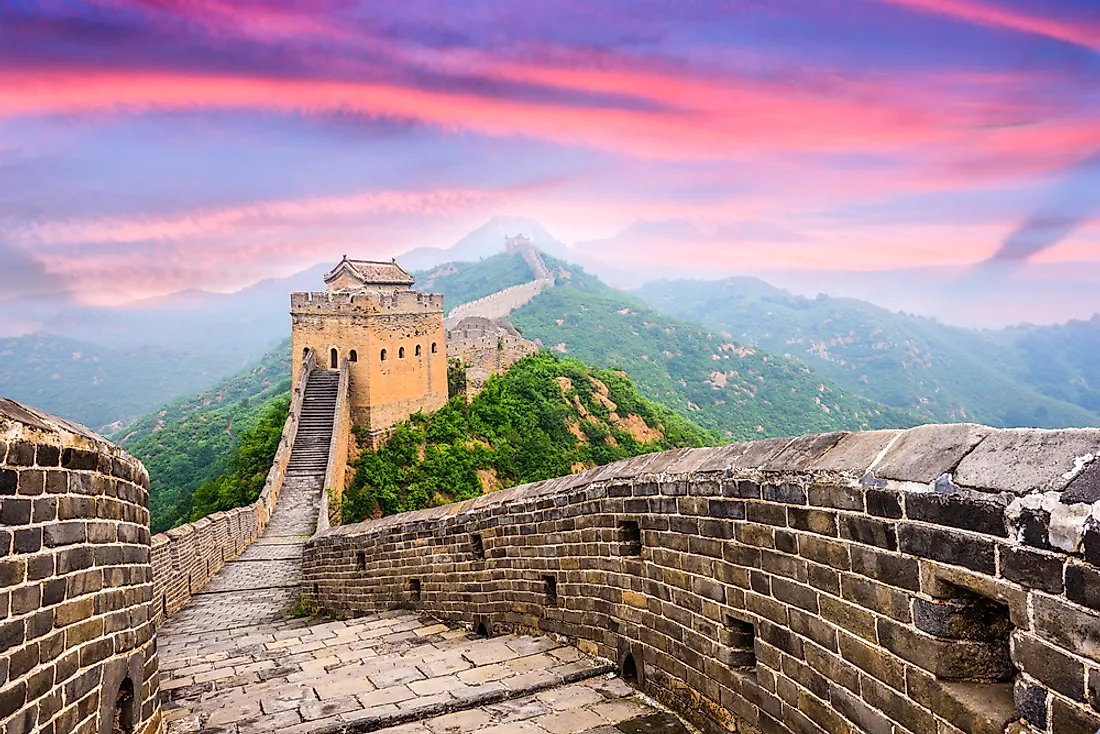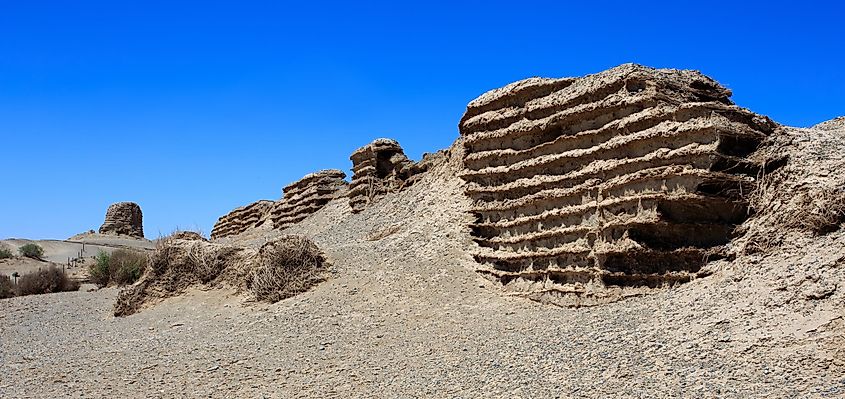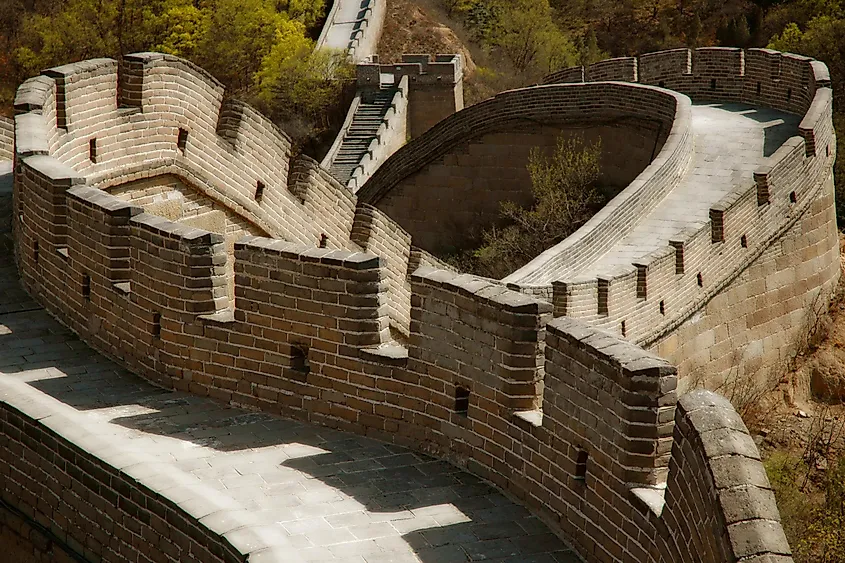When Was the Great Wall of China Built?

- The Great Wall is a sequence of fortifications constructed over 2,500 years out of stone, wood, tamped earth, bricks, and other materials.
- Despite its effectiveness, it was sometimes ineffective in keeping enemies out such as in 1644 when the Manchu Qing managed to remove the Ming Dynasty and establish a dynasty of their own.
- It is a myth that the Great Wall of China can be viewed from space.
The Great Wall of China is located along the historical borders of northern China. It extends northwest from the Chinese border with North Korea, passes near Beijing, and continues west to end near Jiayuguan City. The wall is a sequence of fortifications constructed out of stone, wood, tamped earth, bricks, and other materials. The fortifications were first constructed in the 7th century BCE in order to provide protection to Chinese states and empires against attacks from nomadic groups who lived in the Eurasian Steppe. Other sections were erected later on, during different dynasties.
In total, the wall has a length of about 13,171 miles (21,196 km). Its height averages between 20 and 23 feet (6 to 7 m), with the tallest portion going as far high as 46 feet (14 m). Located in a mountainous region with an altitude of about 4,722 feet, the Huanglouyuan Section which can be found east of Beijing has the highest altitude, while the Laolongtou Section, right nest to the Bohai Sea, is the lowest with a height just above sea level. In terms of width, the wall has an average distance of between 13 and 16 feet (3.9 to 4.9 m) at the top while the base averages around 21 feet (6.4 m).
Building the Wall
The construction work took more than 2,500 years starting from the 7th century BCE. Before the start of the construction, the Chinese were already well versed in wall-building techniques. The first significant construction period was during the Qin Dynasty, between 221 and 207 BCE. This dynasty was established after the first emperor, Emperor Qin Shihuang, defeated other smaller warring Chinese states and decided to form a united China. The warring states that were captured had also built wall fortifications, although much of these original structures were not that strong since they were designed to protect from spears and other forms of light weaponry. Emperor Qin Shihuang ordered the destruction of the weak walls so that new ones could be brought up, and he had extensions built to link them all together to defend his newly united China against nomadic tribes from the north. These states included the likes of the state of Chu (which was the first to build a wall fortification), Qi, Zhao, Qin, Wei, and Yan.

Subsequent Chinese dynasties extended, repaired, or expanded the wall at different times in history. Some of the notable dynasties that made massive changes to the wall included the Han Dynasty (202-220 CE) and the Ming Dynasty (1368-1644 CE). The Han Great Wall, which is the section that was built by the Han Dynasty, is the longest section. In addition, there were four periods of construction and repair during this period. During the Han Dynasty, the Wall extended from North Korea and west past Hohhot, and another section stretching from Lanzhou to Xinjiang province.
As for the Ming Dynasty, there was a period of around 200 years that was dedicated to the repair and construction of new sections. Despite its effectiveness, it was sometimes ineffective in keeping enemies out such as in 1644 when the Manchu Qing managed to remove the Ming Dynasty and establish a dynasty of their own. The final construction work done on the wall was back in 1878 in the later phases of the Qing Dynasty, which existed from 1644 to 1911. The construction and maintenance stopped since the wall was rendered obsolete by more advanced weaponry such as fire and explosives.
The Great Wall of China Today

Today, the parts of the wall that are still in good condition were erected or maintained during the Ming Dynasty. Some sections have been renovated in recent times, while others have been destroyed. Some of the best and most widely known sections from the Ming Dynasty include Jinshanling, Simatai, Mutianyu, and Badaling. The Great Wall of China is a popular tourist attraction offering magnificent views, with several sections having been declared 5A-rated tourist attractions, which in the rating categories used by the Chinese Ministry of Culture and Tourism means these sections are among the most important and best-maintained tourist destinations of the country.
While it is a myth that the Great Wall of China can be viewed from space, it can be viewed with considerable ease on your next trip to the country. Different sections are interesting to see for different regions, with some of the best sections easily accessible by car or by booking a tour. The trip is definitely worth the amazing views!











